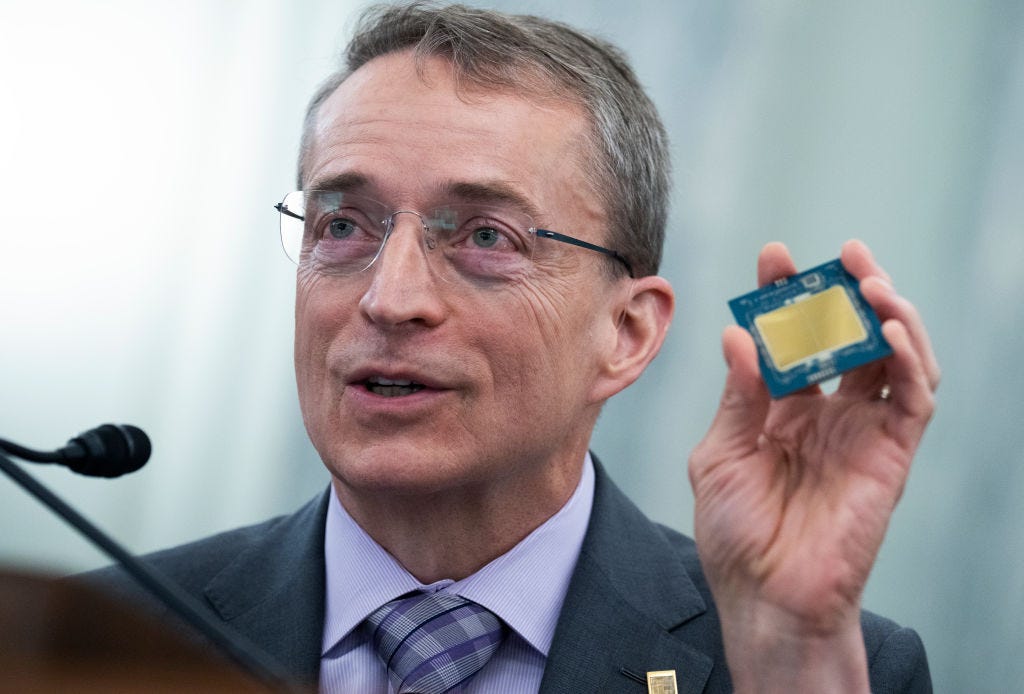[ad_1]

Image: Tom Williams/CQ-Roll Call, Inc via Getty Images
Intel chief Pat Gelsinger has predicted that the global chip shortage will remain a challenge for the industry until at least 2024, particularly in areas such as foundry capacity and tool availability.
Despite this forecast, Gelsinger outlined that Intel is in a “good position” to manage the constraints that arise as a result of the supply chain shortage.
“In fact, Intel is rising to meet this challenge,” he told investors on Thursday during a first-quarter earnings call.
“Following our announcements in Arizona, New Mexico, and Ohio, we recently announced a series of investments in Europe, spanning our existing operations as well as our new investments in France and Germany — the silicon junction,” he continued.
“These investments position Intel to meet the future growth, and represent a significant step toward our moonshot goal of having half the world’s semiconductor manufacturing located in the US and Europe.”
Last September, Intel announced it was going to spend up to €80 billion over the next decade to create a “mega” chip fab in Europe, after announcing it was investing €7 billion to double the capacity of its Ireland facility and plans to bring its 7nm chip production to the plant.
During the call, Gelsinger pointed out that ongoing COVID-19 lockdowns in Shanghai and the Russian invasion in Ukraine have demonstrated the need to promote “more resilient and more geographically balanced semiconductor manufacturing”, particularly as he believes that semiconductors will be the “the fuel of innovation and transformation”.
“I continue to believe we are just at the beginning of a long-term growth cycle across semiconductors,” he said.
“We continue to see some matched-set limitations in areas like ethernet, some softening in low-end consumer PC, and some inventory adjustments as we discussed on our last call, but overall, the demand signals from customers continue to be robust in areas like enterprise, cloud, AI, graphics, and networking.”
He noted, however, the company’s pace in which it achieves its expansion plans will also be dependent on the passing of the CHIPS (Creating Helpful Incentives to Produce Semiconductors) Act. If passed, it would unlock an eye-watering $52 billion funding boost to US production of semiconductors.
The investment is part of a wider package of about $250 billion that covers scientific endeavours ranging from artificial intelligence to quantum communications, called the US Innovation and Competition Act.
The landmark bill has so far been given the greenlight by the US Senate and House of Representatives. Now, it is awaiting debate by both chambers before it can be sent to the White House for the president’s signature.
“I recently testified before the Senate to highlight the critical need for the US to fund the CHIPS Act. I continue to encourage Congress to fund this critical legislation and enable us to move faster toward making a balanced semiconductor supply chain a reality,” Gelsinger said.
During its first-quarter results, Intel reported revenue came in at $18.4 billion, down 7% year-on-year, while net income skyrocketed by 141% to $8 billion.
Revenue by business saw Intel Foundry Services soar by 175% during Q1 to $283 million. Alongside this, strong growth was achieved by its datacenter and AI group, network and edge group, and accelerated computing systems and graphics businesses, which all recorded around a 20% year-on-year rise during the quarter. Meanwhile, its client solutions group fell 13% to $9.31 billion during the period.
[ad_2]
Source link



